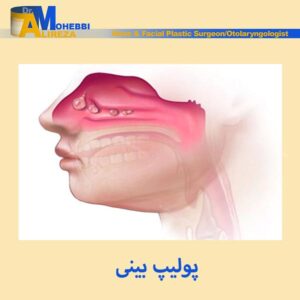Ali-Reza Mohebbi, MD, Hadi Ghanbari, MD, and Saloumeh Salarian, MD.Ear Nose Throat J. 2008 October;87(10):556-557
A 10-year-old boy presented with a 4-year history of progressive right-sided nasal obstruction that was associated with repeated bouts of fetid and purulent rhinorrhea, snoring, epistaxis, open-mouth breathing, and halitosis. Clinical examination revealed that he was well oriented and had no significant facial deformity or nasal speech.
Anterior rhinoscopy revealed a left septal deviation and nasal obstruction with profuse discharge, but no other significant pathology. Computed tomography (CT) of the sinuses demonstrated a large, expansile mass with calcified foci in the right nasal cavity and opacification of the maxillary, ethmoid, and sphenoid sinuses (figure 1). CT also confirmed the septal deviation. These findings suggested the presence of a benign neoplasm of the right nasal cavity. Magnetic resonance imaging (MRI) without gadolinium in 5-mm slices again showed the large, expansile soft-tissue mass in the right nasal cavity and sinusitis in the right maxillary and ethmoid sinuses.

Coronal CT shows the calcified foci in the right nasal cavity, the opacification
of the right maxillary and ethmoid sinuses, and the septal deviation to the left
Following the removal of nasal secretions and fungus-like material, the patient underwent endoscopic sinus surgery under general anesthesia. Extraction of the mass was accomplished without any significant problem. To our surprise, the core of the mass turned out to be a crumpled sheet of thin plastic (figure 2).

Examination of the core of the rhinolith reveals a thin sheet of plastic
Rhinoliths are rare calcareous concretions that form as the result of a deposition of salts on an intranasal foreign body.1 Rhinolithiasis was first described in 1654, and since then, more than 600 cases have been reported in the literature.2 The formation of rhinoliths usually begins when a child inserts an inanimate foreign object into the nose, either accidentally or intentionally. As the deposits accumulate around the foreign body, the size of the object slowly increases. These foreign bodies may include almost any kind of inert substance that is small enough to be inserted into the nose.2–4 Symptoms at the time of entry of the foreign body are usually minor, and rhinoliths can remain in the nasal cavity for many years.2 Depending on how long a foreign body has been impacted in the nose, symptoms of rhinolithiasis range from a slight unilateral nasal discharge to an obstruction to marked structural changes.1,5
Rhinolithiasis is a possible diagnosis for patients with densely mineralized lesions that appear to be benign and do not cause bony destruction.
References
- Polson CJ. On rhinoliths. J Laryngol Otol 1943; 58:79-116.
- Appleton SS, Kimbrough RE, Engstrom HI. Rhinolithiasis: A review. Oral Surg Oral Med Oral Pathol 1988; 65 ( 6 ); 693 – 8.
- Royal SA, Gardner RE. Rhinolithiasis: An unusual pediatric nasal mass. Pediatr Radiol 1998; 28 ( 1 ): 54-5.
- Hadi U, Ghossaini S, Zaytoun G. Rhinolithiasis: A forgotten entity. Otolaryngol Head Neck Surg 2002; 126 ( 1 ): 48-51.
- Price HI, Batnitzky S, Karlin CA, Norris CW. Giant nasal rhinolith. AJNR Am J Neuroradiol 1981; 2 ( 4 ): 371-3.





